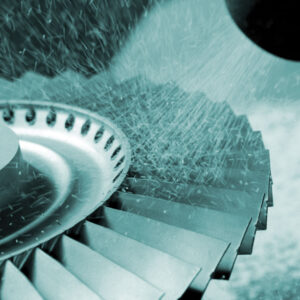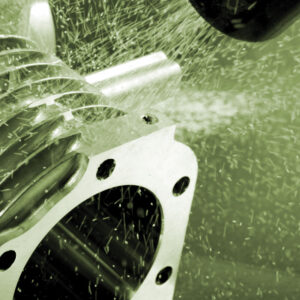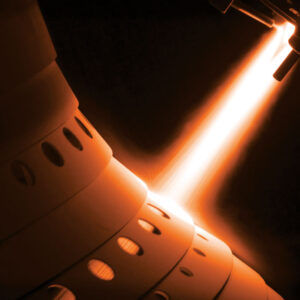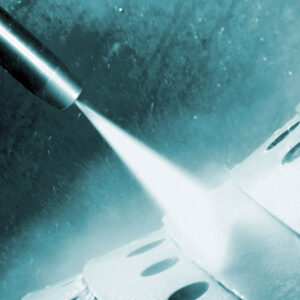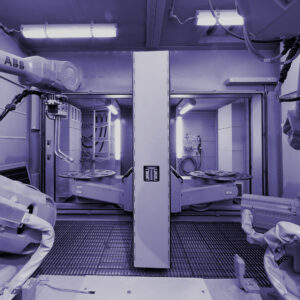What is Thermal Spraying?
Home / What is Thermal Spraying?
What is Thermal Spraying?
Thermal spraying is the general term used to describe a variety of coating processes. Common processes described simply as “thermal spraying” include plasma spraying, HVOF spraying, arc spraying and flame/combustion spraying. These processes have also been generally called “metallising” or “metal spraying.” While differing in method, all the processes are employed to add a coating to a substrate that, when combined, results in a “system” that is better suited to the engineering application than just the substrate alone.
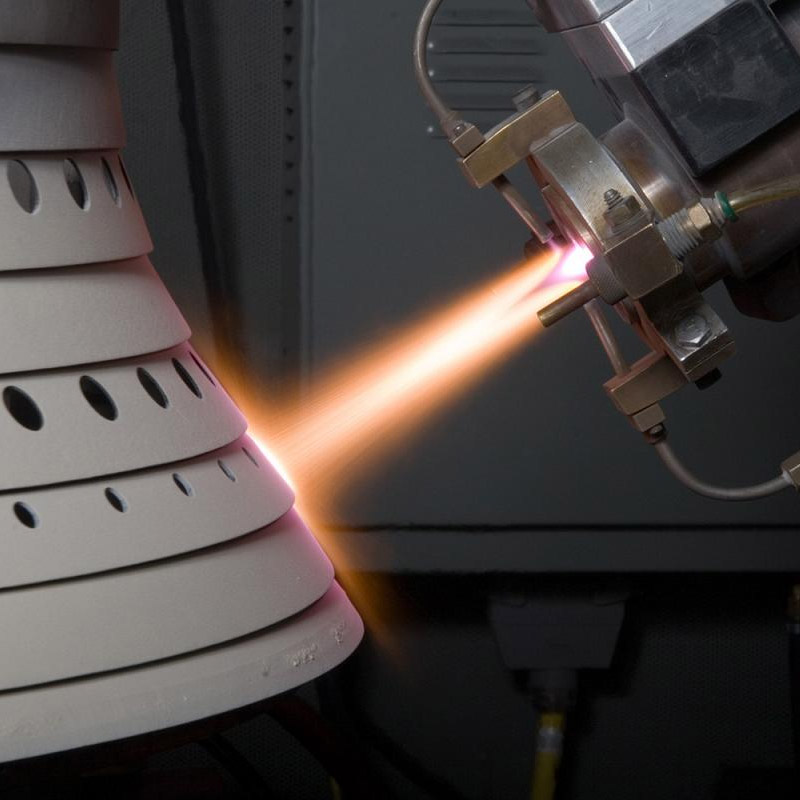
Examples of how a coating can benefit a substrate include:
| Substrate | Coating | System Properties |
|---|---|---|
| Cast Iron | Stainless steel | Low cost casting with good corrosion resistance |
| Nickel based alloy | Yittria base ceramic | Strong with excellent heat handling |
| High strength steel | Tungsten carbide chrome | Strong with excellent wear & corrosion resistance |
Each thermal spray process uses two powerful characteristics of energy—heat and mechanical force—but in differing ways. In order to achieve a predictable and repeatable result, the process energy must be controlled to convert the coating’s raw material to a molten or plasticized state and accelerate it toward the substrate so that the coating particles can adhere to the surface, cool, and build up a coating.
The application of the design dictates the coating properties, and the coating properties oftentimes dictate the thermal spray method.
Arc Spraying of Low-Cost Components
Light-duty corrosion protection on low-cost components generally can be sprayed with the economical process of electric arc spray using wire as not only the feedstock but also as the source of the electrical potential for melting. In this application, zinc or aluminum based materials in wire form are fed toward an intersecting point with each of the two feed wires having an externally applied electrical potential. The resulting arc causes the feed wires to melt. Since the potential energy in this process is converted mainly to heat and light, compressed air is directed at the intersection/arc location to atomize and “blow” the molten material toward the substrate. Subsequent passes of the torch, either by manual means or automation, build up the coating to the desired thickness.
Plasma Spraying of Aircraft Engines and Industrial Gas Turbines
A porous ceramic coating applied to a high melting point/low heat corrosion component is an important application for the hot section of aircraft engines and industrial gas turbines. This application uses powder, with a very high melting point, as the raw material. The gun must have a very high heating capability in order to melt this type of powder, making the intense heat generated in the plasma plume a good choice.
The plasma process uses very high electrical potential to disassociate ions from gases. As the gases reclaim their lost ions a tremendous amount of energy is released, mainly in the form of heat, which melts the powder. The process also releases enough kinetic energy to accelerate the molten material toward the substrate. Subsequent passes of the torch, either by manual means or automation, build up the coating to the desired thickness.
HVOF Spraying of Airplane Landing Gear Piston Surfaces
Airplane landing gear piston surfaces require a very hard, smooth, and fatigue resistant coating over the high strength steel substrate. The HVOF process combines fuel and oxygen to create rapidly expanding combustion gases inside a specially designed combustion nozzle. This process converts much of its energy into mechanical force which accelerates the powder particles through the flame very quickly. The powder moves so quickly through the flame that the particles in many applications do not fully melt. The plasticized particle’s collision with the substrate at very high velocity supplies the final heat needed to complete the melting process of the powder. This allows the coating to be built up on the substrate in a very dense and uniform manner. Subsequent passes of the torch, either by manual means or automation, build up the coating to the desired thickness.
The following table summarizes the comparison between popular thermal spray technologies and how they uniquely achieve their coating characteristics:
| Gun description | Heat | Velocity |
|---|---|---|
| Flame |
Gas temperature range: 4,600–5,200°F
Fuel gas is burned with oxygen to melt a continuously fed wire, powder or rod. |
Particle velocity range: 300–800 fps
Expanding combustion gases and compressed air. |
| Wire arc |
Gas temperature range: 10,000–12,000°F
High voltage arc struck between two electrically conductive feed wires turns wire into molten metal. |
Particle velocity range: 500–1,000 fps
Compressed air blown behind the wire intersection sprays atomized molten metal onto the substrate. |
| Plasma |
Gas temperature range: 30,000+°F
High voltage arc created in an atmosphere of monatomic (Argon and Helium) or diatomic (Nitrogen and Hydrogen) gases causes electrons to be pulled from the gas which then releases intense heat (and light) when the electrons rejoin the ions. Depending on the dwell time the powder experiences in the plasma plume, the powder may be semi-molten or molten as it leaves the nozzle. |
Particle velocity range: 800–1,800 fps
The ionization process creates both heat and mechanical energies inside the gun mixing chamber. |
| HVOF (High Velocity Oxygen Fuel) |
Gas temperature range: 6,000+°F
The controlled combustion of fuel (liquid or gas) in an oxygen rich combustion chamber creates high temperature combustion gases. |
Particle velocity range: 2,400–3,200 fps
The combustion process creates rapidly expanding gas in the combustion chamber that results in a very high velocity gases. |
Since each process uniquely creates energy, each requires unique utility requirements as generalized below (note the high voltage requirements for the plasma process and high gas flow requirements for the HVOF process):
| Gun description | Electricity | Gases/fuel | Gun cooling (water/BTU) | ||||||
|---|---|---|---|---|---|---|---|---|---|
| Wire arc |
200V
75 amps |
Compressed air: 40 psi
20 scfh |
N/A | ||||||
| Plasma |
460V/3P/60Hz
143 amps |
Hydrogen (H2)
50 scfh |
Helium (He)
250 scfh |
Argon (Ar)
300 scfh |
Nitrogen (N2)
210 scfh |
120,000 | |||
| High energy plasma |
460V/3P/60Hz
180 amps |
Hydrogen (H2)
225 scfh |
Helium (He)
250 scfh |
Argon (Ar)
400 scfh |
Nitrogen (N2)
200 scfh |
278,000 | |||
| HVOF (High Velocity Oxygen Fuel) | Liquid fuel |
Kerosene
8 gal/hr |
Oxygen (O2)
2,300 scfh |
288,000 | |||||
| Gas fuel |
Hydrogen (H2)
1,700 scfh |
60,000 | |||||||
|
Propylene (C3H6)
200 scfh |
Oxygen (O2)
700 scfh |
||||||||
|
Propane (C3H8)
200 scfh |
|||||||||

